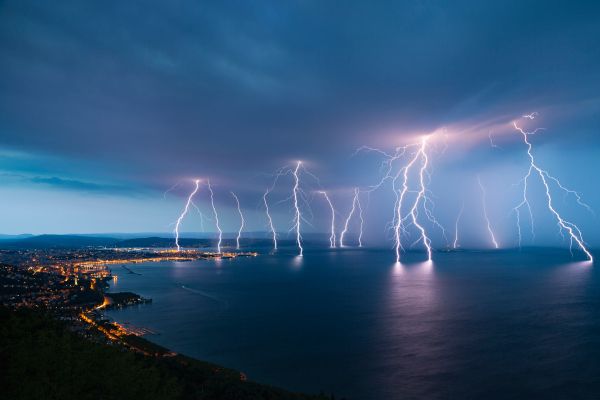Artificial and modified organisms could become essential tools to fight climate change, clean up pollution, protect biodiversity, and more.






The world’s small-scale farmers now can see a path to solving global hunger over the next decade, with solutions—such as adopting climate-resilient crops through improving extension services—all culled rapidly via artificial intelligence from more than 500,000 scientific research articles.
The results are synthesized in 10 new research papers—authored by 77 scientists, researchers and librarians in 23 countries—as part of Ceres2030: Sustainable Solutions to End Hunger. The project is headquartered at Cornell University, with partners from the International Food Policy Research Institute (IFPRI) and the International Institute for Sustainable Development (IISD).
The papers were published concurrently on Oct. 12 in four journals— Nature Plants, Nature Sustainability, Nature Machine Intelligence and Nature Food —and assembled in a comprehensive package online: Sustainable Solutions to End Hunger.

But people need to be kept at the centre of it.
There is more than one reason that we need to reforest Planet Earth. Less than a fifth of Earth’s original forests have survived the rise of humans since the last glaciation, and over half of them are in just five countries (see figure below).
The biggest effect from loss of forests is loss of habitat and the resultant loss of biodiversity, even if you don’t care about climate change. We’re burning billions of acres of pristine Indonesian rain forests to plant palm oil trees (Scientific American) just to get a cooking oil with a better shelf life.
Forest biodiversity encompasses not just trees, but the multitude of plants, animals and microorganisms that inhabit forested areas — and their associated genetic diversity. Over a billion humans depend on dense forests for their survival, although all humans depend on forests in some degree for some aspect of their lives.

Grid AI, a startup founded by the inventor of the popular open-source PyTorch Lightning project, William Falcon, that aims to help machine learning engineers work more efficiently, today announced that it has raised an $18.6 million Series A funding round, which closed earlier this summer. The round was led by Index Ventures, with participation from Bain Capital Ventures and firstminute.
Falcon co-founded the company with Luis Capelo, who was previously the head of machine learning at Glossier. Unsurprisingly, the idea here is to take PyTorch Lightning, which launched about a year ago, and turn that into the core of Grid’s service. The main idea behind Lightning is to decouple the data science from the engineering.
The time argues that a few years ago, when data scientists tried to get started with deep learning, they didn’t always have the right expertise and it was hard for them to get everything right.

But in the upper levels, we tend to see the opposite, clockwise spin, which is called a ridge of high pressure. That key component above storms like Delta allows rising air to leave at the top of the storm and flow outward away from the center, known as a chimney effect. It operates like a vacuum and keeps a storm’s engine cycling.
But perhaps the most astonishing similarity to Wilma is Delta’s extremely small eye, which is only 4 miles across. Wilma had the smallest eye on record in the Atlantic — 2.3 miles in diameter. Meteorologists believe this is a key reason Wilma was able to become so strong, so fast.
The science is rather simple: The smaller the eye, the faster the winds can circulate around the center.

The recent 2020 US West Coast wildfire has opened infernos, as it ravaged hundreds of homes and charred hundreds of neighborhoods. On September 10, 2020, CNN announced that the Creek Fire had taken more than 166,00 acres after destroying 360 structures in Central California, Amidst a state emergency, firefighters had to defeat the “beast” that turned the scenery to a similar fiction movies scene on a doomsday. Wildfire causes environmental disasters that were attributed by many scientists to climate change. The preparedness, detection, and management of wildfires and other environmental disasters, that affected the environment hinge on satellite technologies, essentially, the Remote Sensing of sea surfaces and land areas, and the civil space-based Earth Observation and its applications. Such space-based technologies are deployed to assess, monitor, and manage local, regional, and large-scale transboundary environmental issues that impact the societies, economies, and ecosystems. Thanks to its large areas’ data collection and high-frequency capabilities Earth Observation, in particular, has become a powerful tool to monitor the terrestrial environment and manage environmental disasters as it be addressed in this article.
Satellite technologies have been used to understand climate change better to find solutions to mitigate its deteriorating consequences, such as hurricanes, droughts, rising sea levels, melting polar ice caps, wildfire, and floods. Scientists relied upon various observation systems and satellite technologies, networks of weather balloons, buoys, and thermometer, to collect climate change’s evidence from the depths of the oceans to the top of Earth’s atmosphere. For instance, EO is relied upon to map the greenhouse gases. Earth Observation (EO) monitors the carbon dioxide (CO2) concentration, the second most abundant greenhouse gas component after water vapor, satellite monitored through water management, and weather forecast [1]. Public and private entities harnessed spectroscopy and satellites to monitor externalities data from various sources.
This video shows how holographic storage works, using green light to write data as a persistent hologram inside an optical crystal. The data can then be read…How does holographic storage work?
See a home you can live in, make a living out, and grow most of your food in too, the ultimate bug-in or bug-out location — on Mars — here on Earth, or just about anywhere! That is why I call it my Universal Habitat. This is a very low ecological footprint home that can be beautiful, almost no energy cost to maintain, could be built affordably, and be resistant to many natural and man-made disasters such as tornadoes, fire, radiation, and worse. This is the ultimate self-sufficient bunker/fortress.
You can support Galactic Gregs by supporting the sister channel Green Gregs by clicking the links below:
See the Special Deals at My Patriot Supply: www.PrepWithGreg.com
Awesome deals for long term food supplies!
For gardening in your Lunar habitat Galactic Gregs has teamed up with True Leaf Market to bring you a great selection of seed for your planting. Check it out: http://www.pntrac.com/t/TUJGRklGSkJGTU1IS0hCRkpIRk1K